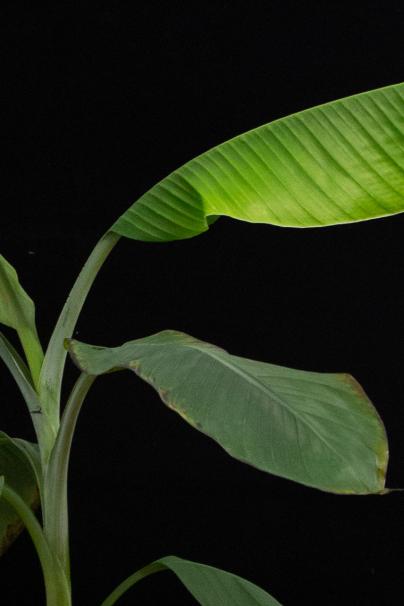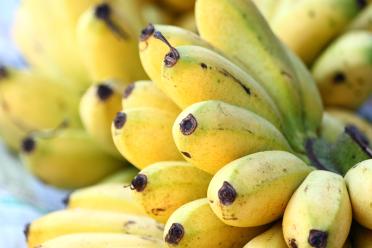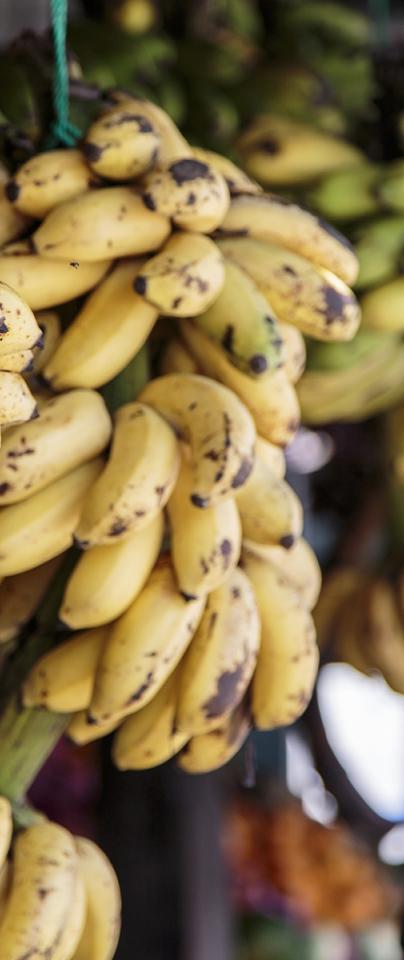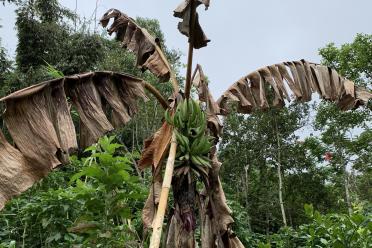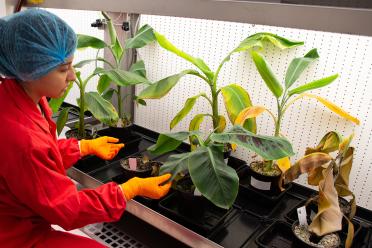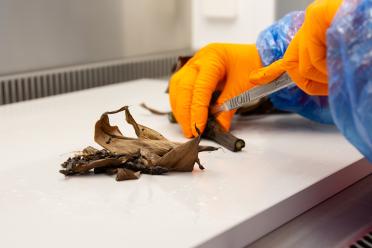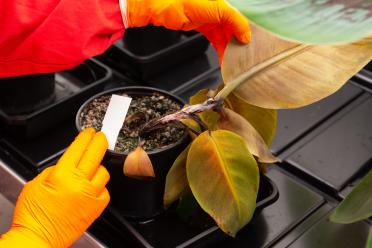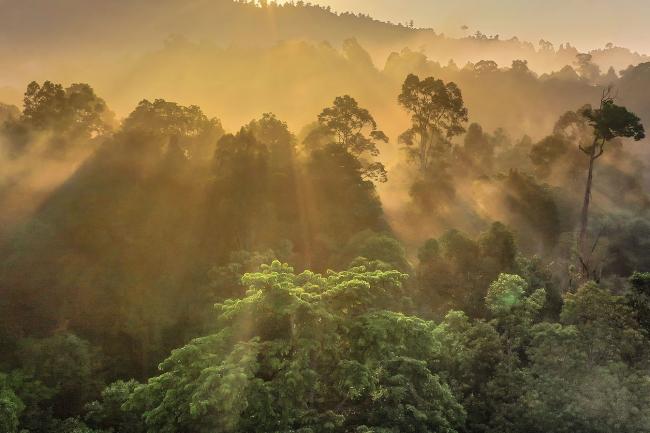After the group has identified plants which have resistance to TR4, they will be examining the genome of these plants to find candidate resistance genes which could be edited into the Cavendish.
Carolina Olave Achury, a PhD student working on TR4 resistance in the De Vega Group and collaborating with Tropic, says the hunt for a resistant gene is a complicated game of DNA hide-and-seek. Carolina uses in vitro growing and infection protocols to maintain and test the plants in controlled conditions.
“The presence of a gene for resistance in a resistant plant but not in a sensitive one is a good clue, but regulation and expression are also important. This requires other genomic approaches in my PhD, like expression analysis,” she explains.
“There are certain things we can look for about its appearance - the immune system of a banana plant works in a similar way to our own immune systems, so a gene related to immunity is recognisable, based on the identification of motif patterns in the protein sequence.
“Looking for resistance genes in wild plants has been proven to be a success. It also brings back diversity to a crop not only mono cultured but also sterile.”
Looking at the genomes of related species isn’t exclusively applicable to bananas. Across a range of food crops, there is a heavy dependence on certain cultivars due to their commercially attractive traits. This leaves them equally vulnerable to the emergence of new plant pathogens.
The approaches taken by de Vega’s Group are also being applied by others at the Earlham Institute in a range of organisms, improving the resilience of anything from wheat to farmed fish.
Conserving and enhancing biodiversity will be critical if we are to overcome the urgent global challenges facing living organisms and ecosystems in the future.
